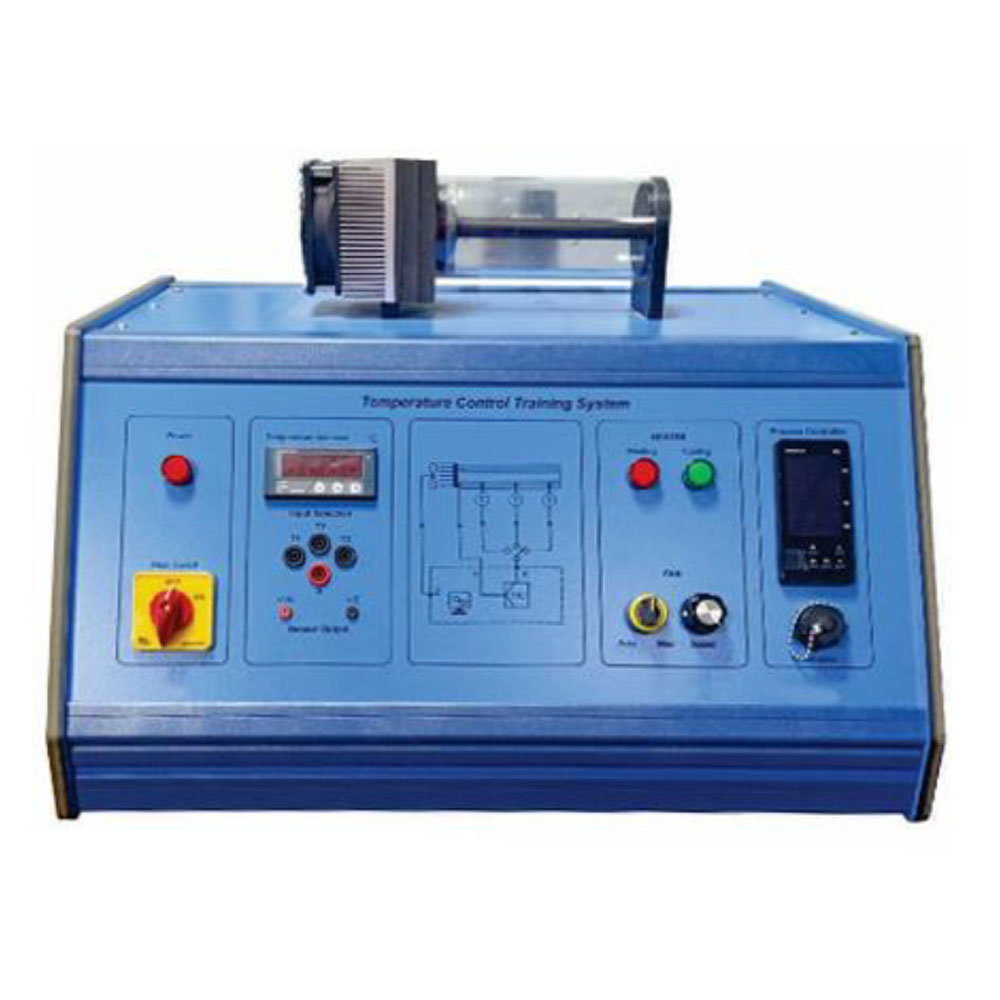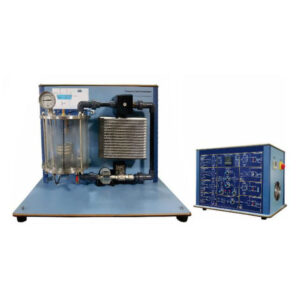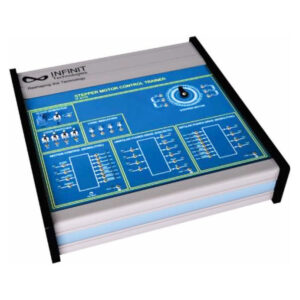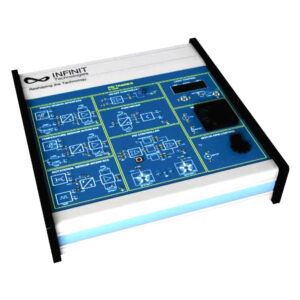Temperature control training system offers to learn the basic fundamentals control engineering. The experimental set-up is mounted on a housing which accommodates all the electronics. A metal bar, which is thermally insulated with cladding, is heated or cooled at one end by a Peltier element. Three temperature transducers along the axis of the bar allow the variation in temperature along the length of the bar, and hence the associated thermal lags, to be obtained for differing operating conditions. A dial gauge thermometer offers the advantage that the temperature can be read off directly at any time. The temperature is measured using a thermal resistor (PTC). The sensor output signal is sent to the software controller. The output signal from the controller influences the operating voltage of the Peltier element and hence the heating capacity. A fan that dissipates part of the heating power can be activated by the software to investigate the influence of disturbance variables. The powerful state-of-the-art software is an integral part of the training system, embodying the principle of hardware/software integration (HSI). It enables the experiments to be conducted and evaluated in a user-friendly manner. The software has network capability. The link between the experimental unit and the PC is made via a USB port.
Experiments
- Fundamentals of control engineering based on the example of a temperature control system. System dead time can be obtained from the response
- Open loop control response.
- Effects of different controller parameters and methods on the response of the closed loop system
- Recording of step responses (Reference variable / Disturbance variable)




